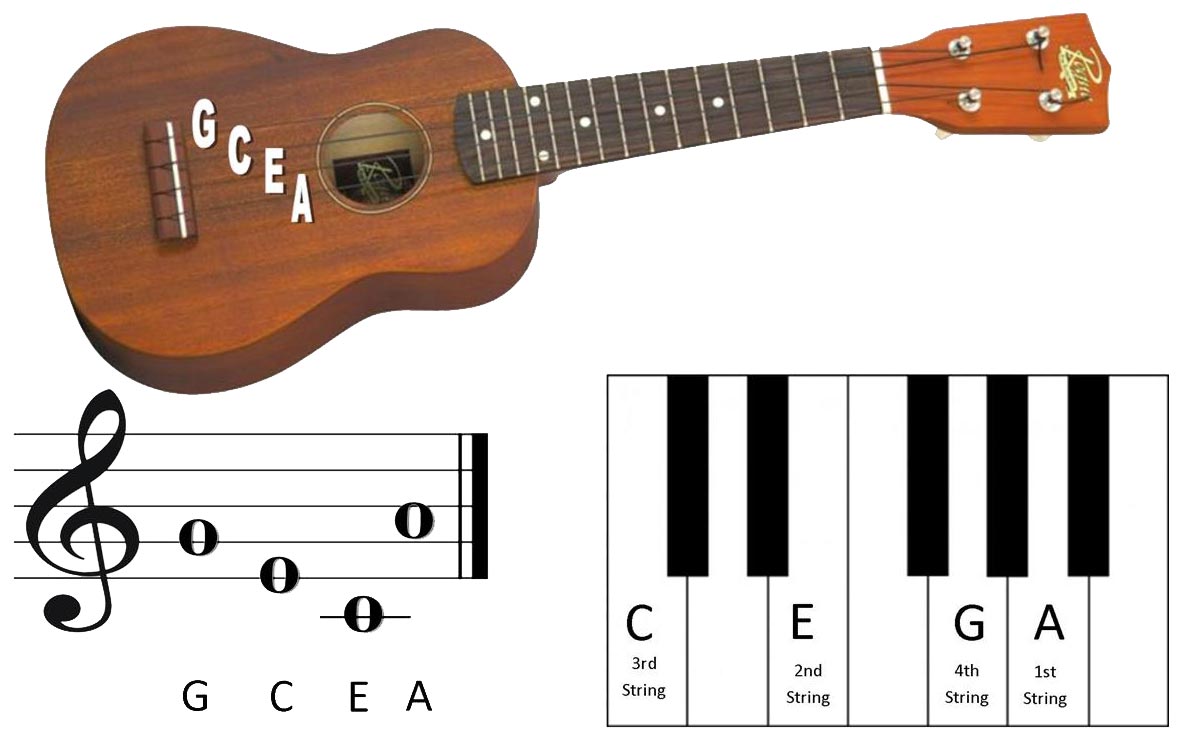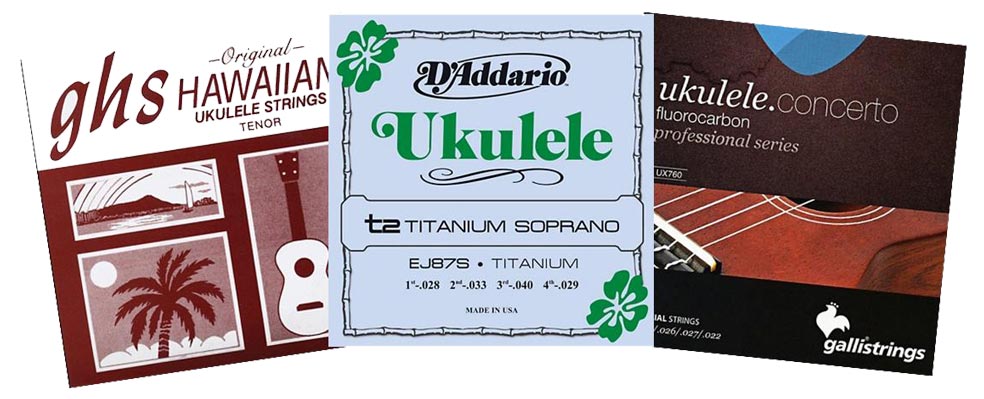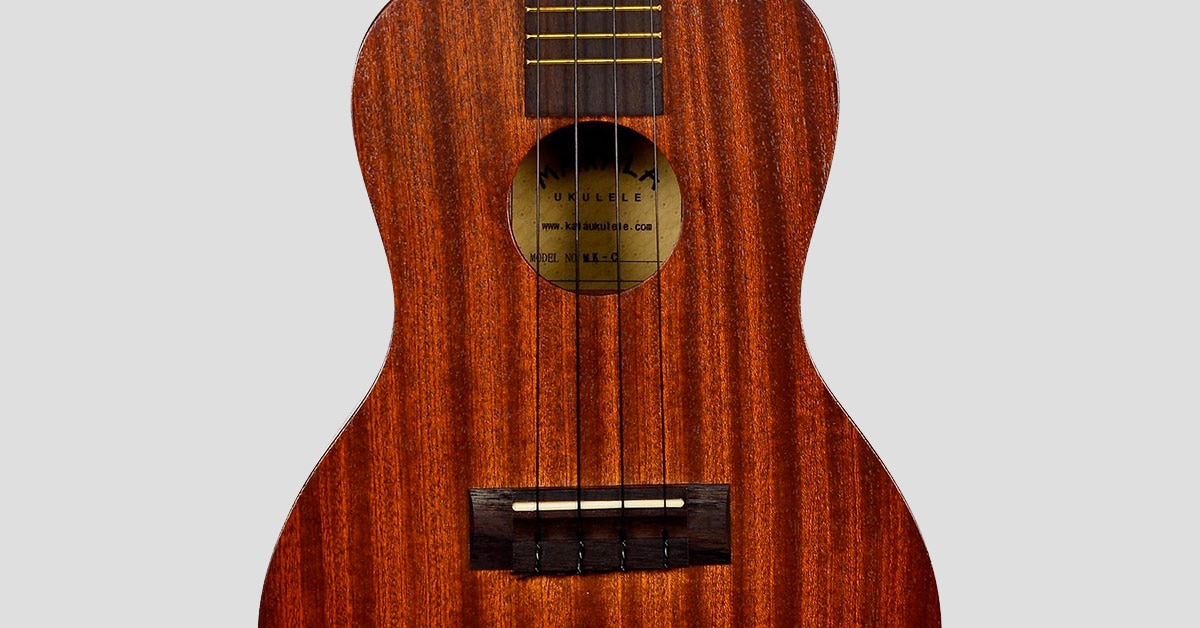For a tiny investment, a fresh set of quality strings can improve or revive your ukulele’s sound. Many lower-cost ukes are shipped with less than optimal strings, and a better quality set can make a surprising difference in their sound. In this guide we will help you choose the set that’s right for your uke.
One size doesn’t fit all
As we detail in the Musician’s Friend Ukulele Buying Guide, most ukes fall into one of four sizes. Each size has a different scale length and string tension requirements. (The scale length is the distance from the nut to the bridge.) It’s therefore important to choose a set intended for your type of ukulele. Here are the four most common ukulele sizes with their typical scale lengths, overall lengths, and most common tunings:
|
Ukulele Type |
Scale length |
Overall length |
Tuning |
|
Soprano (or Standard) |
13” |
21” |
G4-C4-E4-A4 or A4-D4-F#4-B4 |
|
Concert |
15” |
23” |
G4-C4-E4-A4, A4-D4-F#4-B4, or G3-C4-E4-A4 |
|
Tenor |
17” |
26” |
G3-C4-E4-A4, G4-C4-E4-A4, A4-D4-F#4-B4, or D4-G3-B3-E4 |
|
Baritone |
19” |
30” |
D3-G3-B3-E4 |
Reentrant vs. Linear Tuning
As you can see from the chart above, there’s more than one way to tune most ukuleles. In the most common method called reentrant tuning (also sometimes called high 4th or C tuning), the G string is tuned to the G above the C and E strings. You’ll see this also referred to as “high G” tuning. Because the strings cover a smaller range, reentrant tuning offers more even overall tone.

Standard reentrant tuning shown on a ukulele, the music staff, and piano keys.
With linear tuning (also called low 4th tuning), the G string is tuned down an octave creating a broader tonal range that some players prefer. Dissonant-sounding chords tend to ring more clearly with linear tuning. Many players feel linear tuning produces more guitar-like tone.
Some ukulele string sets such as those made by Oasis are designed specifically for use with low or high G tuning. Oasis uses fluorocarbon for their high G string, giving it a bright, crisp sound. The low G string has a nylon core and a copper/silver wrap wire that imparts a warmer tone. Which leads to our next topic—the materials used in ukulele strings.
Types of Ukulele Strings
While the vast majority of ukulele strings are made of various nylon polymers, there are a number of variations, each with their own tone characteristics.
Nylon: Because string makers use various types of nylon polymers, sound can vary from brand to brand. The least expensive nylon strings are produced through extrusion—a process where nylon monofilament is created by pushing the molten polymer through holes of specific diameters. More costly strings are also extruded, but are then ground to produce a more consistent diameter. Ground strings tend to have a slightly more textured feel.
Nylon is not affected by humidity, but temperature shifts can require you to retune. Also, all nylon strings tend to stretch more when new and take some time to “settle down.” Before attempting to adjust the intonation or fine tune your uke, it’s a good idea to give new strings some stretching time.
Some nylon strings are made with polymer formulas that are intended to mimic the rounder, warmer tone of traditional gut strings. One of these polymers, D’Addario’s Nyltech strings, are designed to offer the warmth of traditional gut strings, while providing punch and tuning stability.

Fluorocarbon: This polymer, originally developed for use in fishing line offers a slightly brighter sound than nylon and is less affected by temperature changes.
All types of nylon and fluorocarbon strings can be safely cut to length.
Titanium: This monofilament material offers strength, durability, and a somewhat brighter tone than nylon with more projection and volume.
Wound nylon strings: These have a nylon core that is wrapped with a polymer winding material and are usually found in sets intended for tenor and baritone ukuleles as the two lower strings. Some players find the finger squeaks that these string may produce objectionable.
Wound metal strings: These are typically used on lower notes and larger ukuleles. The most common winding materials are copper or aluminum. They too can sound a little squeaky.
Note that cutting wound strings to length may ruin them if the wrap material starts to separate from the core.
Steel Strings: For the most part it’s not a good idea to attempt to string a uke with steel strings since the additional tension they exert on the top, bridge, and neck of the instrument will likely damage it. Besides, steel strings won’t produce the classic sound of a uke. There are a few instruments such as banjoleles, guitar/uke, and dobro/uke hybrids designed for steel strings. If you’re unsure about choosing replacement strings for such instruments, consult with the manufacturer.
So Which Strings are Right for Me?
There’s no one answer. Two ukes will respond differently to the same type of strings. The key to finding the right set to match your instrument and playing style is to experiment. Uke strings—even the highest quality types—are quite inexpensive. By trying various string sets designed for your type of uke you can narrow down the brand and string composition that work best for you.
Tip: When you restring your ukulele, make a note of the date on the package and then add any comments you may have about their tone, tuning stability, and durability as you play them. This will help you keep track of your likes and dislikes over time.
Shop the complete Musician’s Friend selection of ukulele strings.
After reading this guide, if you’re still unsure which uke strings are right for you, we invite you to call our friendly, knowledgeable Gear Heads at (800) 449-9128.







































































































































